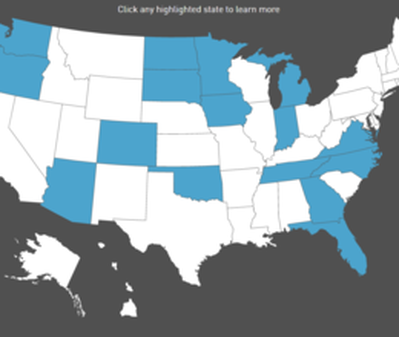Things kind of get started in the 1960s (as many things repressive in the US). At that time, government responses to protest were largely aggressive and often violent. Researchers refer to this approach as the "escalated force model" — a strategy known by five distinct characteristics:
- Limited concern with the First Amendment rights of protesters and police obligation to respect and protect those rights;
- Limited tolerance for community disruption;
- Limited communication between police and demonstrators;
- Extensive use of arrests as a method of managing demonstrators ; and,
- Extensive use of force in order to control demonstrators.
Now, this is not to say that the state treated challengers any more kinder and gentler. In a paper written a few years ago, entitled "Velvet Glove, Iron Fist, Or Even Hand? Protest Policing in the United States, 1960-1990", we discover that when challenged in a substantive manner (i.e., when the claim/objective is radical, when property is damaged, when tactics are highly confrontational), the US government is more likely to respond with aggressive and violent tactics. In this regard, there was no change in how governments policed protest. Invoking Bob Marley, when somebody moved (in a particular way), they got hurt - the same as it ever was.
Although not tremendously well documented, I recall reading about the reduction of spaces being made available for protest on US campuses throughout the country. Indeed, at one point, I had a class assignment to find the protest zones available for 20 American Universities over time and it turned out that all of them had the sheer number of places reduced and the locales were generally moved to places with the smallest amount of traffic. Protest was simply being made more convenient and less threatening.
But, this is all par for the course in a democracy. There are many people who might be in favor of free speech, assembly and protest but there are a great many who are not in favor of these - especially, if they do not particularly care for the messages being put forward. What is alarming however is that we know very little about the effects of such shifts on subsequent challenges. We do not know about the short, medium and/or longer term effects of such activities. Some were excited to see protests associated with the Occupy movement, Black Lives Matter and the global action of woman around the world to show dissatisfaction and solidarity but these activities were few and far between. Additionally, the objectives of these movements and the effectiveness of the relevant activities were not always clear.
While I am one to quickly identify when governments are engaging in restrictions of civil liberties and personal integrity violations, we should be cognizant of larger trends as well as other questions regarding freedom that emerge.
Relevant reads:
Kraska, Peter B., and Victor E. Kappeler. 1997. “Militarizing American Police: The Rise and Normalization of Paramilitary Units.” Social Problems 44(1): 1-18.
McCarthy, John, and Clark McPhail. 1998. “The Institutionalization of Protest in the United States.” Pp. 83-110 in The Social Movement Society, edited by David S. Meyer and Sidney Tarrow. Boulder, CO: Rowman and Littlefield Publishers.

 RSS Feed
RSS Feed
